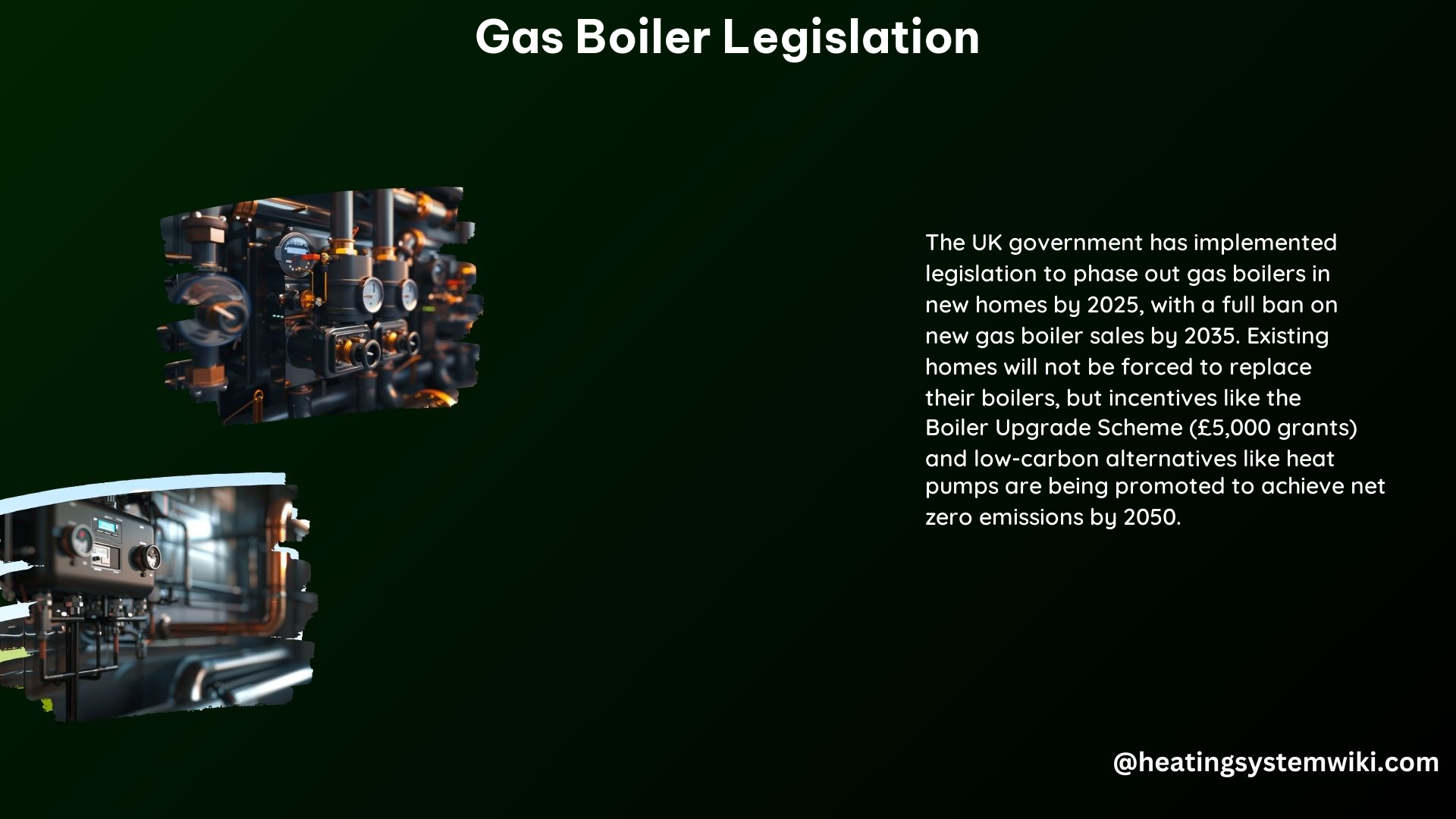The gas boiler legislation implemented in December 2012 primarily focuses on ensuring the safety and efficiency of gas boilers while reducing their environmental impact. This comprehensive guide delves into the key points of the new regulations, providing a detailed understanding of the technical specifications, safety implications, and the timeline for the phase-out of traditional gas boilers.
Flue Visibility: Ensuring Safe and Efficient Gas Boiler Operation
The new gas boiler regulations mandate that the flues of a gas boiler must be visible for inspection and maintenance purposes. This requirement is crucial for ensuring the safe operation of gas boilers, as hidden flues can lead to serious safety hazards, such as carbon monoxide poisoning.
- Flue Visibility Requirement: The regulations stipulate that the flue of a gas boiler must be visible and accessible for inspection and maintenance. This means that the flue cannot be concealed behind walls, ceilings, or other obstructions.
- Importance of Visible Flues: Visible flues allow for easy inspection and monitoring of the boiler’s operation, ensuring that the flue is properly installed and functioning as intended. This reduces the risk of carbon monoxide buildup, which can occur if the flue is blocked or malfunctioning.
- Consequences of Hidden Flues: Hidden gas flues can pose significant safety risks, as they can lead to inadequate ventilation and the accumulation of carbon monoxide. Carbon monoxide is an odorless, colorless gas that can be deadly if inhaled in high concentrations.
- Inspection and Maintenance: With visible flues, homeowners and technicians can easily inspect the boiler’s flue for any signs of wear, damage, or blockages. This allows for timely maintenance and repairs, further enhancing the safety and efficiency of the gas boiler.
Technical Specifications: Transitioning to Low-Carbon Technologies

The new gas boiler regulations also focus on the technical specifications of gas boilers, emphasizing the use of low-carbon technologies as alternatives to traditional gas boilers.
Heat Pumps
- Definition: Heat pumps are energy-efficient devices that transfer heat from one location to another, typically from the outside air or the ground to the interior of a building.
- Efficiency: Heat pumps can be up to 4 times more efficient than traditional gas boilers, with a typical efficiency rating of 300-400%.
- Environmental Impact: Heat pumps do not directly produce greenhouse gas emissions, making them a more environmentally friendly option compared to gas boilers.
- Suitability: Heat pumps are suitable for both new and existing buildings, and they can be used for both heating and cooling.
Hydrogen Boilers
- Definition: Hydrogen boilers are a type of low-carbon heating technology that use hydrogen as the fuel source instead of natural gas.
- Emissions: Hydrogen boilers do not produce any direct carbon dioxide emissions, as the only byproduct of the combustion process is water vapor.
- Compatibility: Hydrogen boilers can be designed to be compatible with existing gas boiler infrastructure, making them a potential replacement option for traditional gas boilers.
- Development: The development and deployment of hydrogen boilers are still in the early stages, but they are seen as a promising solution for achieving net-zero emissions in the heating sector.
Transition Timeline
- 2023: Austria, France, and Luxembourg ban gas, oil, and coal boilers in new buildings.
- 2025: The UK bans gas boilers in new buildings as part of the Future Homes Standard, aiming for 31% lower emissions compared to current levels.
- 2026: Germany bans coal and oil boilers in existing buildings, aiming for 65% renewable energy in existing buildings.
- 2030: California bans new gas furnaces and water heaters.
- 2033: The UK’s official climate advisers recommend banning all gas boilers to achieve net zero emissions by 2050.
- 2035: The UK extends the ban on gas boilers to all new installations, with a focus on low-carbon technologies like heat pumps and hydrogen boilers.
Conclusion
The new gas boiler legislation implemented in December 2012 is a crucial step towards ensuring the safety and efficiency of gas boilers while also reducing their environmental impact. By mandating visible flues and promoting the use of low-carbon technologies, these regulations aim to pave the way for a more sustainable heating future. As the timeline for the phase-out of traditional gas boilers continues to evolve, it is essential for homeowners, contractors, and policymakers to stay informed and adapt to these changing regulations.
